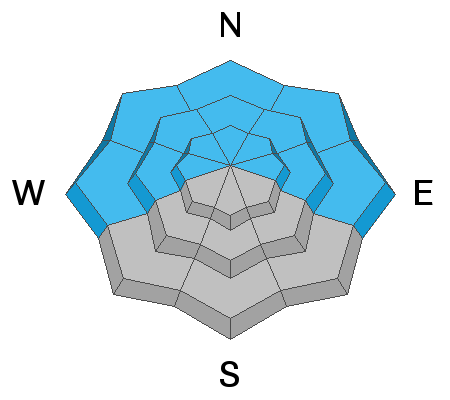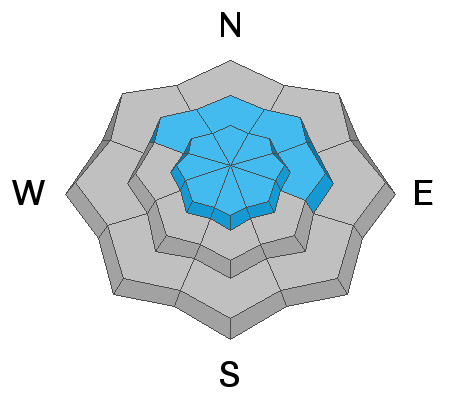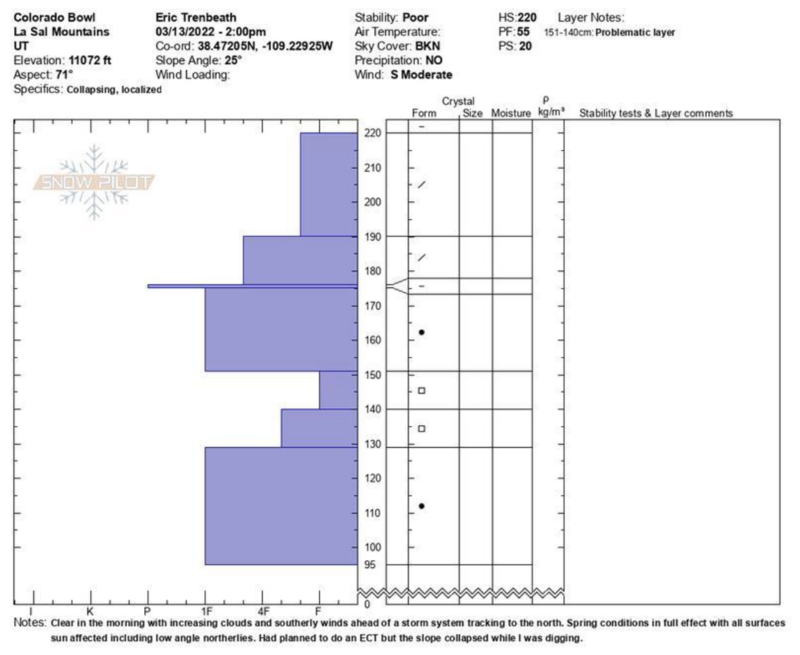Forecast for the Moab Area Mountains

Issued by Eric Trenbeath on
Monday morning, March 14, 2022
Monday morning, March 14, 2022
Areas of CONSIDERABLE avalanche danger remain on steep slopes facing NW-N-NE-E and human triggered avalanches failing on a buried persistent weak layer 2-3 feet deep are likely. It's not yet time to go big down here so keep your aspirations low if you are planning a trip to the La Sals. A MODERATE danger for triggering this type of avalanche exists on W facing slopes. Most S facing terrain has LOW danger but as the sun warms things up today be alert to signs of loose wet instability such as rollerballs or pinwheels and get off of steep slopes if they become wet and sloppy.

Low
Moderate
Considerable
High
Extreme
Learn how to read the forecast here










